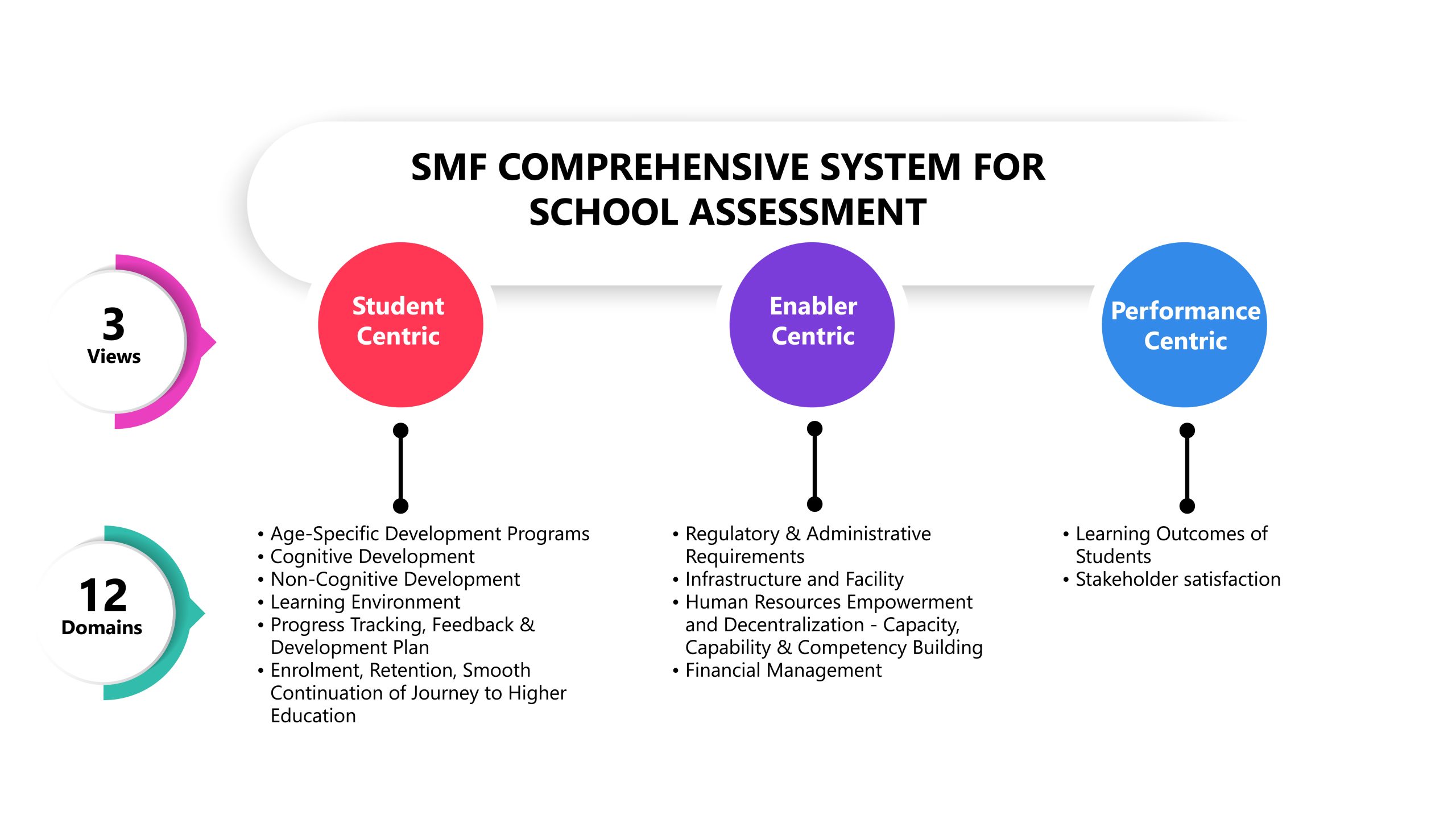- SMF pioneered school-level assessment and accreditation when it was largely confined to higher education.
- Developed structured, scalable frameworks for continuous school improvement since 2002.
- Over 1,345 schools assessed under the SMF SESQ system with 1,000 trained assessors nationwide.
- Endorsed by state governments, CBSE, KPMG, and leading academic bodies (TISS, NAAC).
- Current model aligned with NEP 2020 and NCF 2023.
SYSTEM FOR ENHANCEMENT OF SCHOOL QUALITY (SESQ)
Strengthening School Ecosystems through Quality and Process Improvement
Highlights

Phase I: School Assessment and Support Programme (SASP) (2002–2011)
- Framework for self and third-party evaluation based on state and national standards.
- Implemented in 4,374 schools nationwide to understand diverse education systems.
Phase II: School Assessment and Accreditation (SAA) (2012–2015)
- Evolved from SASP into a developmental tool, focusing on both infrastructure and process quality.
- Governed by quality management principles (PDCA, TQM, ISO).
- Adopted by state governments and CBSE, with endorsement from top institutions.
- 105 schools assessed across six states.
Phase III: SMF System for Enrichment of School Quality (SESQ) (2015–Present)
- Fully third-party assessment system with enhanced assessor training and software support.
- Customisable and multilingual, aligned with national and global education benchmarks.
- Institutionalised by Vidya Bharti for large-scale external assessments.
Reach
| Year(s) | States/Regions | Nodal Authority | Schools Assessed |
| 2002–2011 | Pan India, Goa, Gujarat, Maharashtra, A&N | Various Govt. & Educational Bodies | 4,374 |
| 2012–2015 | MP, Chhattisgarh, Meghalaya, Maharashtra, Delhi | State Govts & Private Bodies | 105 |
| 2015–2020 | Rajasthan, Odisha, WB, MP, Goa, AP, Karnataka, etc. | Vidya Bharti, APSWERIS, FJEI | 174 (direct) / 11,000+ (via Vidya Bharti) |
| 2020–Present | Pan India | Vidya Bharti | 1,345 (SESQ) / 1,000 Assessors |
